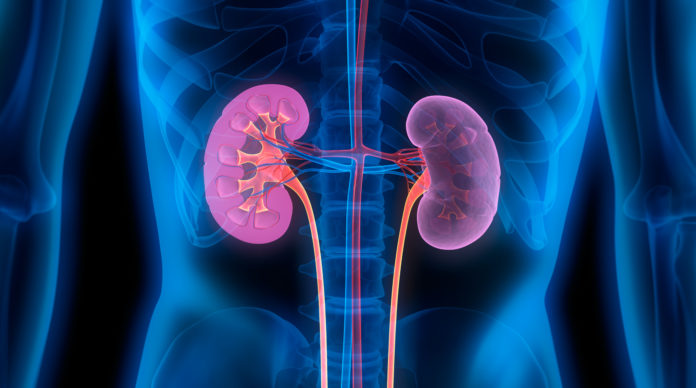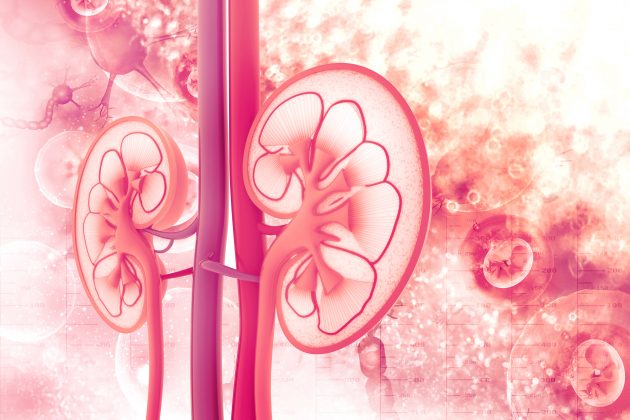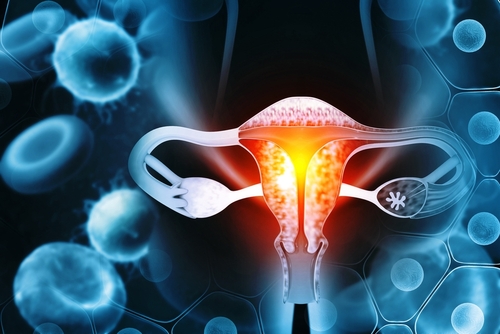Among patients receiving peritoneal dialysis, the leading cause of permanent transition to hemodialysis is peritoneal dialysis-related peritonitis, a complication associated with hospitalization and death, increased peritoneal dialysis-related treatment costs, and long-term adverse sequelae to peritoneal membrane structure and function. Peritoneal dialysis-related infection was identified in the multi-stakeholder SONG-PD (Standardized Outcomes in Nephrology-Peritoneal Dialysis) study as part of a core outcome set for trials among patients on peritoneal dialysis.
Jeffrey Perl, MD, SM, FRCP(C), and colleagues recently reported on results from the Peritoneal Dialysis and Outcomes Practice Patterns Study (PDOPPS), a large, international observational prospective cohort study designed to collect data in a uniform manner on the incidence of peritoneal dialysis-related peritonitis and on practices aimed at prevention of peritoneal dialysis-related peritonitis. Dr. Perl et al. reported data on the incidence, facility, variation, and microbiology of peritonitis across participating countries [American Journal of Kidney Diseases. 2020;76(1):42-53].
Study exposures were facility characteristics including census count, age of facility, and nurse-to-patient ratio, as well as selected facility practices including the use of automated peritoneal dialysis, use of icodextrin or biocompatible peritoneal solutions, antibiotic prophylaxis strategies, and duration of peritoneal dialysis training. Study outcomes of interest were the rate of peritonitis by country, overall, and the variation in rate across facilities, and microbiology patterns.
The analysis included data from 2014 to 2017 from all countries currently part of PDOPPS: Australia and New Zealand, Canada, Japan, Thailand, the United Kingdom, and the United States. A total of 209 facilities and 7051 patients were included. Mean patient ages varied by country: 56 years in Thailand, 58 to 61 years in the United States, Canada, and the United Kingdom, and 63 to 64 years in Australia/New Zealand and Japan. Vintage of kidney replacement therapy was highest in Japan and the United States (median, 1.3 years in each). Serum albumin levels were slightly lower in Thailand, while 24-hour urine volume was noticeably lower in Thailand compared with the other countries. Commonly reported comorbid conditions were cardiovascular disease (25%-51% by country) and diabetes (27%-51% by country).
With the exception of Thailand and Japan, automated peritoneal dialysis was the predominant peritoneal modality. In Thailand, there was essentially no use of icodextrin-based in solutions; use in US non-large dialysis organization (LDO) facilities was low. There was essentially no use of low-glucose-degradation product neutral-pH solutions in Thailand or US non-LDO facilities.
There were 2272 episodes of peritonitis during 7876 years of follow-up. Overall country-specific peritonitis rates ranged from 0.26 to 0.29 episode per patient-year in the United States, Japan, and Canada to 0.35 to 0.40 episode per patient-year in Australia/New Zealand, the United Kingdom, and Thailand. There was broad and overlapping variability in facility peritonitis rates among Australia/New Zealand, Canada, Japan, the United Kingdom, and the United States. Rates of peritonitis that were higher than the guideline limit from the International Society for Peritoneal Dialysis (ISPD) of 0.50 per patient-year were estimated for 10% of facilities overall, 18% of Thailand facilities, 22% of Australia/New Zealand facilities, and 33% of United Kingdom facilities.
Among peritonitis episodes requiring hospitalization within 14 days of onset, median length of stay was less than 1 week in all countries except Japan and Thailand. In Japan and the United Kingdom, 19% to 20% of all peritonitis episodes had a concomitant exit-site infection reported; the rates were 6% in 10% in the other countries.
In analyses combining data from all countries, lower peritonitis rate ratios (RRs) were seen in facilities with a greater proportion of patients using automated peritoneal dialysis (RR per 10 percentage points greater, 0.95; 95% confidence interval [CI], 0.91-1.00); facilities using antibiotic prophylaxis at insertion of peritoneal catheter (RR vs none [Australia/New Zealand, Japan, Thailand, and United States only; contrast was not estimable for Canada or the United Kingdom], 0.83; 95% CI, 0.69-0.99); and in facilities using a training duration of ≥6 days (RR vs <6 days [Australia/New Zealand, Canada, Japan, Thailand, and United States only; contrast not estimable for the United Kingdom], 0.81; 95% CI, 0.68-0.96).
The risk of peritonitis was lower in facilities that used topical exit-site mupirocin or aminoglycoside ointment; however, the association did not achieve conventional levels of statistical significance (RR, 0.79; 95% CI, 0.62-1.10). Associations with other facility factors were weaker.
In analyses of associations of potential confounding patient-level variables with peritonitis, serum albumin level and residual urine volume were associated with lower peritonitis rate. There were also associations between Black race (United States only), male sex, heart disease, gastrointestinal bleeding, and previous hemodialysis experience and higher rates of peritonitis.
Limitations to the study cited by the authors included the observational design of the study, including upper-middle income and high-income countries that may have limited the generalizability of the findings, and unmeasured differences in patients or facility practices that may explain differences in the observed rates of peritonitis.
In summary, the researchers said, “We have identified important regional differences in the risk for peritonitis and potentially modifiable practices that may reduce these risks. Improvement in culture-negative peritonitis rates should be a priority for all participating countries. Because PDOPPS collects data for patient-reported outcome measures, it will also be important to relate these measures to the risk for peritonitis to develop and better understand strategies for patient engagement that will reduce risks for peritonitis. This study sets the stage for future PDOPPS studies of other practices related to peritonitis prevention; for example, highlighting differences in patient training strategies and novel technologies such as remote patient monitoring. In addition, PDOPPS had identified important gaps in translating best practices across facilities, including selected ISPD guideline recommendations that may affect the risk for peritonitis.”
Takeaway Points
- Peritonitis related to peritoneal dialysis is a common complication and carries a high morbidity for patients on peritoneal dialysis. Researchers reported results of the Peritoneal Dialysis Outcomes and Practice Patterns Study (PDOPPS).
- The study included data on the rates of peritonitis and the associations between selected facility practices and peritonitis risk in 209 facilities across seven countries.
- There were important international differences in the risk for peritonitis that may be the result of varied and potentially modifiable treatment practices.
Credit: Original article published here.










